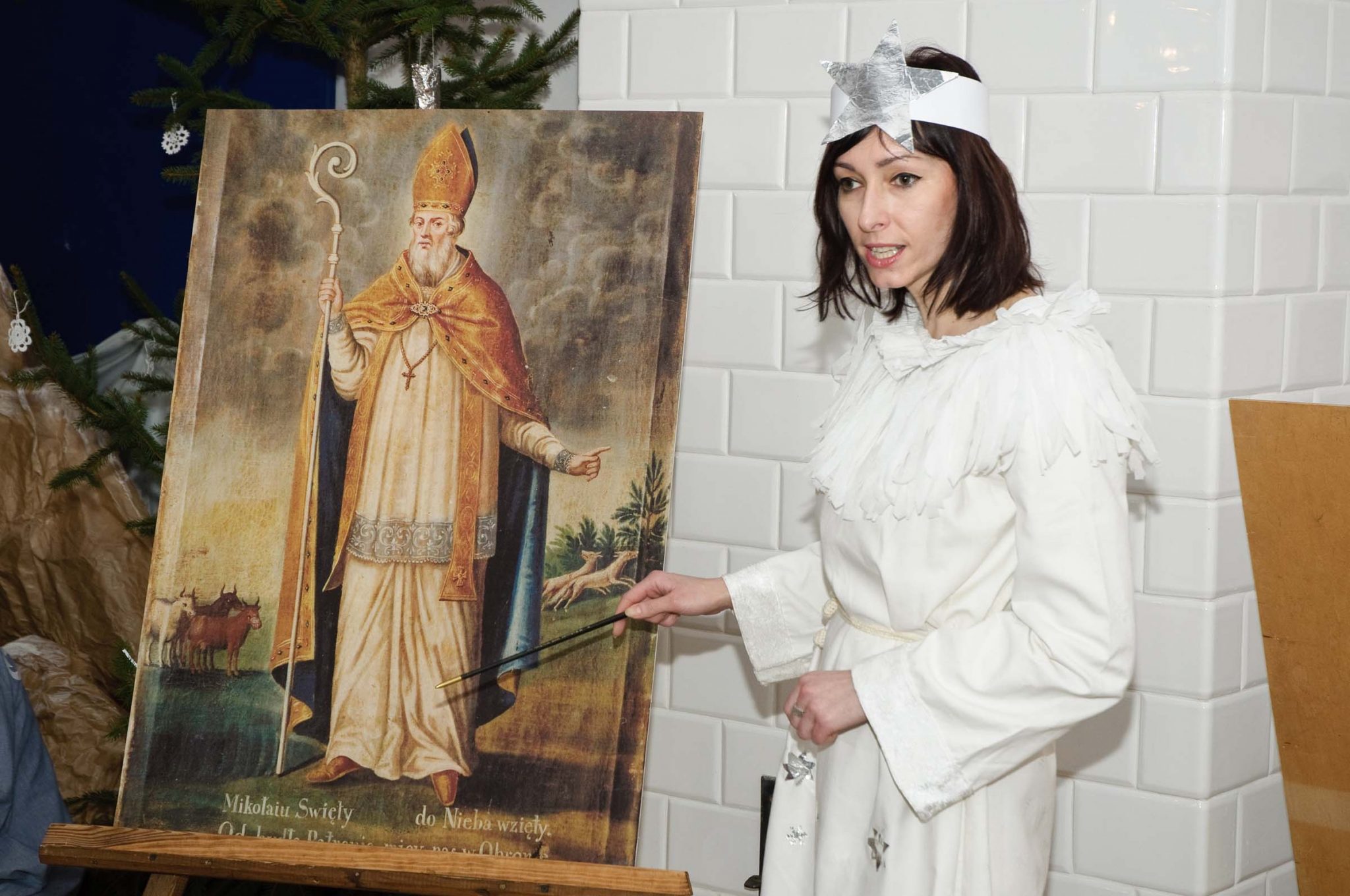SANTA CLAUS – NOT ONLY THE PATRON OF GIFTS
The time of St. Nicholas’ Day [Mikołajki] has always been dedicated – according to tradition – to our youngest visitors. Unfortunately today we cannot invite them to the annual meeting with Bishop Nicholas in the Lublin Open Air Village Museum. However, we are rushing to give you a handful of memories from our past meetings and some information about this saint, whose visit the children from all around the world long for.
The fact that St. Nicholas was not an old man in a red suit and a hat with a pompom is probably known to everyone. But did you know that he was the patron not only of gifts?
All that we know about him is that Nicholas was born and raised in a wealthy and influential family in the city of Patara by the Mediterranean Sea, in Lycia – a land which then belonged to the Roman Empire, and is now located in Turkey. Apparently, he was one of the first beneficiaries of the Edict of Milan from 313 A.D., which equated Christianity with other religions and put an end to the repressions of its followers. He is known as Nicholas of Myra because he held episcopal dignity in this city – the capital of Lycia. He died around 342 A.D. and was buried there on December 6th. In the 11th century, after the Muslim occupation in Mira, the relics of the Saint were brought to Bari (Italy).
The meager historical information is supplemented by numerous legends, tales and fairy tales – mainly about the miracles of St. Nicholas. The main figure who appears in them is a man who helped other people throughout his life, supported them and made them happy. Even as a child, he was devout and kind, and when he grew older, he would distribute his property to those in need. He continued his merciful deeds also after becoming a bishop – he used to give alms generously and, under the cover of night, he placed sacks with money on the thresholds of poor people’s houses. One of the most famous legends about St. Nicholas is the story of how he in this very way gave alms to three virtuous maids who wanted to get married, but their poor father could not provide them with dowries. Thanks to a mysterious gift – three golden spheres – the girls could get married. This way St. Nicholas became the patron of the maidens. Three golden spheres have become a permanent feature of Christian iconography as an attribute of St. Nicholas, and he is often depicted with them in the paintings.
It is said that the virtues and extraordinary kindness of Nicholas made him receive the gift of miracles from God already during his lifetime: he saved the shipwrecked people from the sea waves, multiplied grain in the years of crop failure, and he even raised the dead. He had the power to tame storms, lightnings, storm winds and high sea waves. In view of these and many other miracles attributed to him by the Christian tradition, St. Nicholas looks after many people in need. He is the saint patron of sailors, shipwrecked people, fishermen, raftsmen, carriers, prisoners and prisoners of war. His help is also seeked by monks, notaries, writers, scholars, students taking exams, brewers and millers.
In the Polish folk tradition, St. Nicholas is also the patron of cattlemen and the protector of their herds, which he protects from wolves. At the same time, he is the guardian of the wolves and makes sure they do not die of cold and hunger. Only a saint can do that… On December 6th, farmers and shepherds used to fast and go to church for a specially celebrated service, after which offerings were made – bread, wheat pancakes, cheese sticks, butter and poultry. The shepherds also lit fires and made offerings known as wilki [wolves] – they hung flax and hemp wreaths on the altars and put eggs on them. It was believed that on that day the wolves gathered and discussed about the distribution of their future prey. St. Nicholas was supposed to protect the houses from mice and rats. According to beliefs, the plague of rodents could be reversed by fasting and praying to this saint.
The custom of visiting the households by St. Nicholas (probably of German origin) was known in Poland already in the 19th century, mainly in Silesia, also in the regions of Krakow, Lublin and Masuria, and later also in other regions of Poland. Today St. Nicholas is best known as a burly old man in red clothes. Hardly anyone would recognize him in the image of the previous centuries – a serious and worthy bishop dressed in ceremonial vestments, infule on his head, holding a golden crosier in his hand. Although the form changed, the content of the image of St. Nicholas remained the same. He is still a character full of goodness whose purpose is to give, surprise, do good and make others happy. Therefore, there is a valid reason for St. Nicholas becoming perhaps the most famous saint – not only in the Lublin region and in Poland, but also around the world.
Kategorie: News | Data dodania: 23 November 2020
